Back to Don's Maps
 Back to Archaeological Sites
Back to Archaeological Sites
 Back to the review of hominins
Back to the review of hominins
Homo floresiensis ancestor
Several teeth from an adult and children, and the fossilised mandible of a diminutive species of early human that lived 700 000 years ago have been discovered on the Indonesian island of Flores. It is thought to be the direct ancestor of the Hobbit of Flores, the 1.1 metre tall human species that lived around 50 000 years ago.
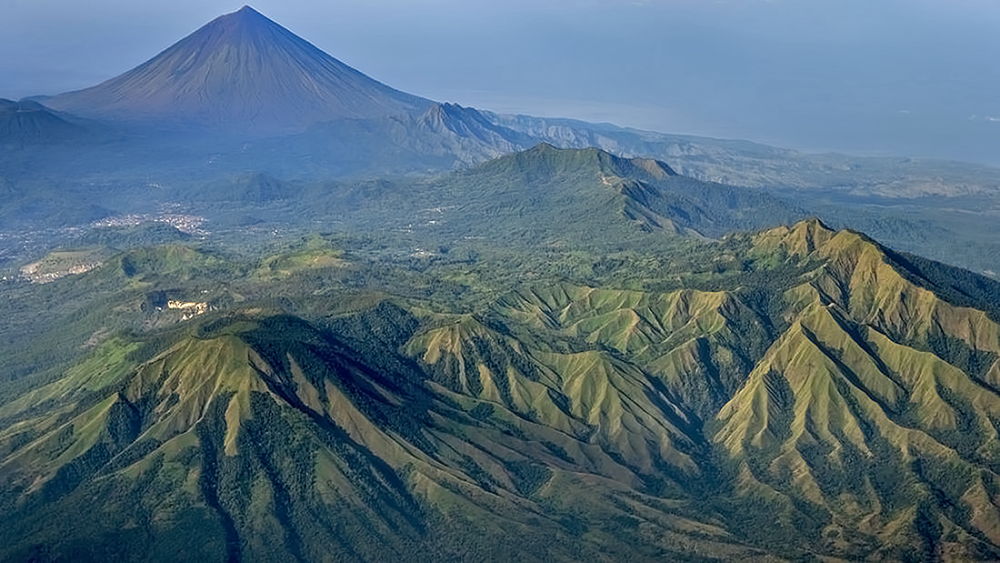
The volcanic landscape around Mata Menge, where the older 'hobbits' were found.
Photo: Unknown Source: http://www.iflscience.com/editors-blog/new-hobbit-fossils-on-flores-hint-at-varied-human-evolution/
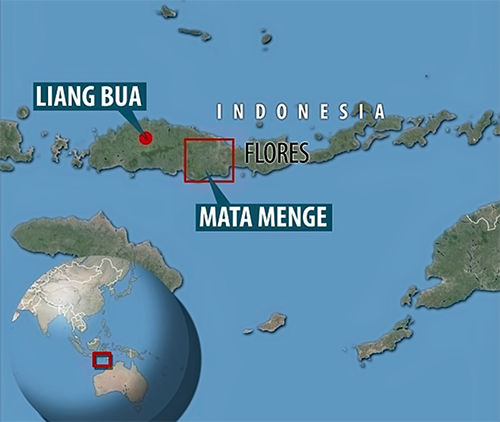
Location of the latest finds.
Photo: http://www.dailymail.co.uk/
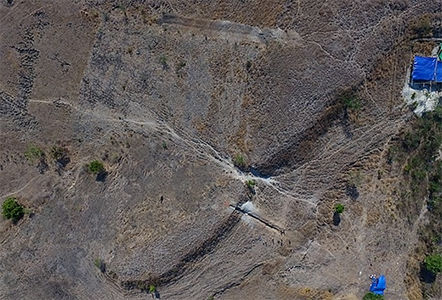
Aerial photo of the general site. Note the filled in trench at the top of this image, possibly in a sterile area.
Photo: © Kinez Riza
Source: http://www.dailymail.co.uk/
Ultimate Source: Brumm et al. (2016)
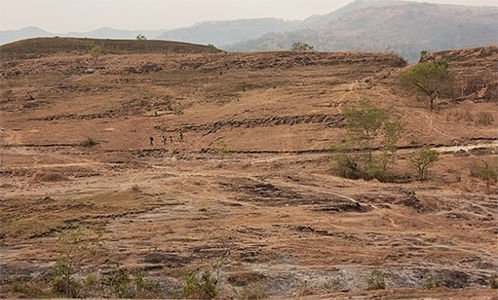
The Mata Menge site is an open grassland, much as it would have been in 700 000 BP.
Photo: © Dr Gerrit van den Bergh/University of Wollongong
Source and text: http://www.dailymail.co.uk/
Ultimate Source: Brumm et al. (2016)
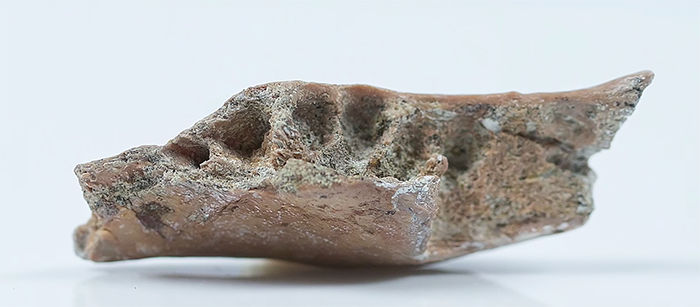
The fossilised mandible of a diminutive species of early human that lived 700 000 years ago has been discovered on the Indonesian island of Flores. It is thought to be the direct ancestor of the Hobbit of Flores, the 1.1 metre tall human species that lived around 50 000 years ago.
Photo: © Kinez Riza
Source: video, www.nature.com/nature
Text: http://www.dailymail.co.uk/
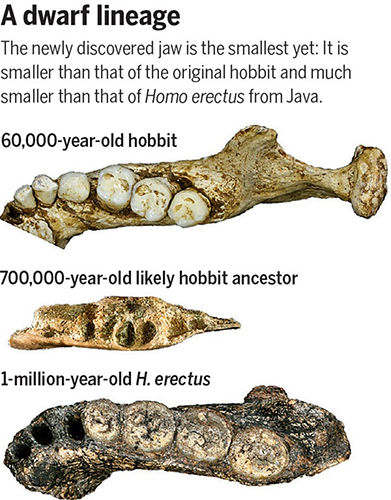
A good comparison of the relevant mandibles from sciencemag.org.
Photo: © Y. Kaifu et al./Nature © June 2016
Source: http://www.sciencemag.org/news/2016/06/tiny-jaw-reveals-dawn-hobbit
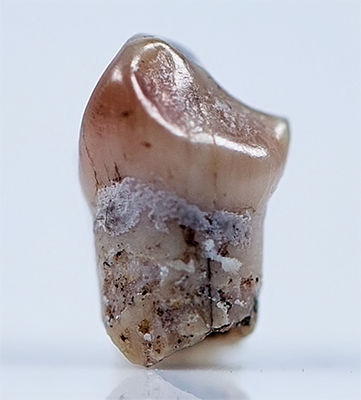

The tooth of an adult found at the site.
Photo: © Kinez Riza
Source: video, www.nature.com/nature
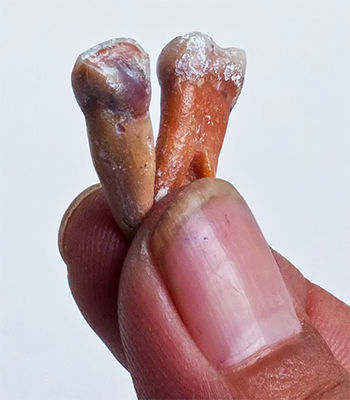
The two milk teeth from children found in the deposit.
Photo: © Kinez Riza
Source: video, www.nature.com/nature
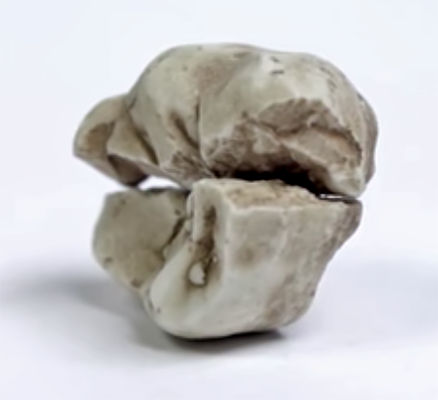
Fractured molar, 9 mm wide, from the deposit.
Photo: © Kinez Riza
Source: video, www.nature.com/nature
Hominin timeline.
Note that Homo floresiensis has not been placed on this timeline. van den Bergh et al. (2016) indicate that it may be a form of Homo erectus.
Photo: © National Geographic, Jason Treat, NGM staff
Source: Lee Berger, University of the Witwatersrand (WITS), John Hawks, University of Wisconsin-Madison
Proximate source: http://news.nationalgeographic.com/2017/05/homo-naledi-human-evolution-science/
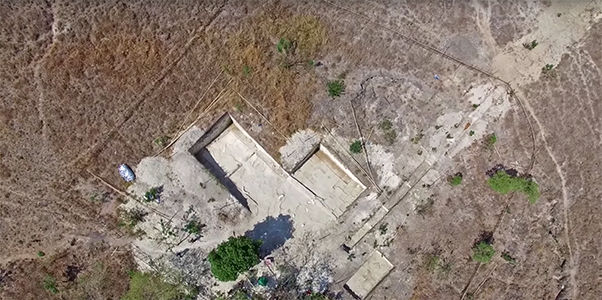
Aerial shot of the particular part of the dig in which the new discoveries were made.
Photo: © Kinez Riza
Source: video, www.nature.com/nature
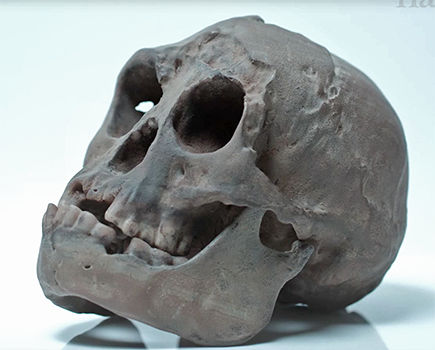
This is the skull of one of the Homo floresiensis from Liang Bua cave.
Photo: © Kinez Riza
Source: video, www.nature.com/nature
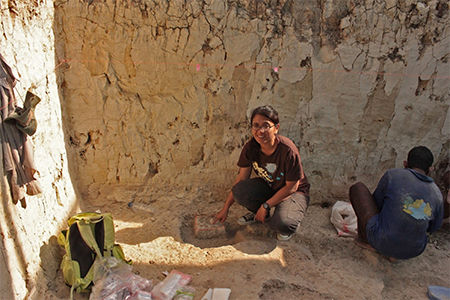
Location where the mandible was found, and the discoverer.
The fossils were found in a deposit of sandstone (pictured) which is thought to be laid down by an ancient stream. Dating techniques revealed the fossils were 700 000 years old.
PhD student Mika Puspaningrum is pictured pointing to where she found the mandible fragment in October 2014.
Photo: © Dr Gerrit van den Bergh/University of Wollongong
Source and text: http://www.dailymail.co.uk/
Ultimate Source: Brumm et al. (2016)
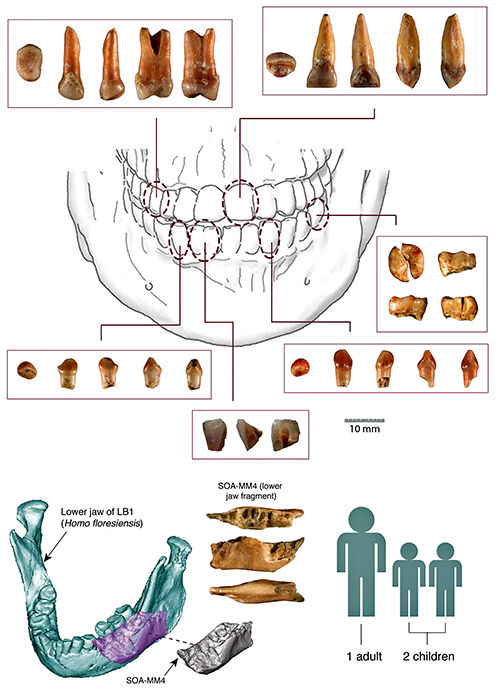
This is a very clear diagram of the hominin fossils found at Mata Menge, and their source in the jaw of the hominin, thought to be similar or identical to a diminutive Homo erectus.
As noted in the diagram, the fossils are believed to be from one adult and two children.
Photo: © Yousuke Kaifu; Susan Hayes prepared the topmost panel.
Complete diagram and text: https://www.theguardian.com/science/2016/jun/08/new-fossils-shed-light-evolution-hobbits-flores#img-2
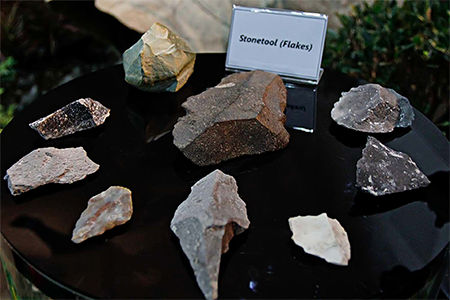
Stone tools found during excavation in Mata Menge, Soa Basin, Ngada, Flores, East Nusa Tenggara, are exhibited during a media conference at the Geology Museum in Bandung.
Photo: Arya Dipa, http://www.thejakartapost.com/news/2016/06/10/oldest-ancient-human-remains-from-flores-made-public.html
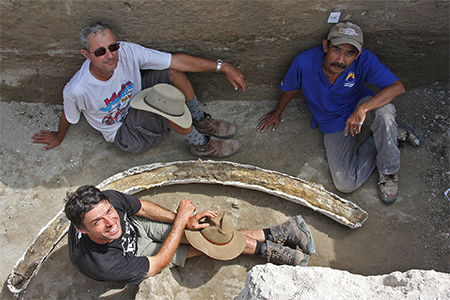
Leaders of the Mata Menge dig sitting around the fossil tusk of a pygmy Stegodon. (Top left) Gerrit D ‘Gert’ van den Bergh, from the University of Wollongong, (top right) Iwan Kurniawan, from the Vertebrate Paleontology Laboratory at Bandung’s Geology Museum (Indonesia), and (bottom) Adam Brumm, from the Griffith University Research Centre of Human Evolution.
Photo: © Iwan Kurniawan, curator at the Geology Museum in Bandung, Indonesia
Source: https://theconversation.com/a-700-000-year-old-fossil-find-shows-the-hobbits-ancestors-were-even-smaller-60192
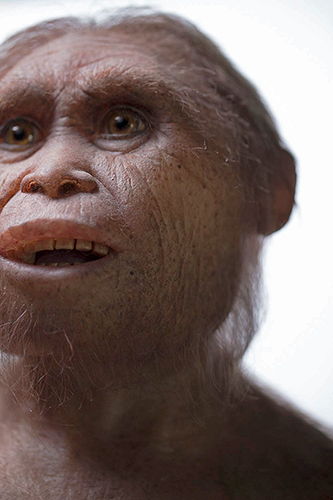
Recreation of the later hobbit.
Photo and sculptor: Unknown
Source: http://www.iflscience.com/editors-blog/new-hobbit-fossils-on-flores-hint-at-varied-human-evolution/

Top three rows, hobbit ancestor mandible from Mata Menge.
Bottom, 'modern' hobbit mandible from Liang Bua cave, for comparison.
Photo: Brumm et al. (2016)
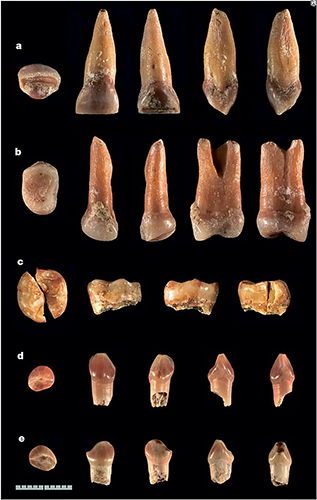
Teeth found at Mata Menge in 2014.
Length of scale interval 1 cm.
Photo:Brumm et al. (2016)
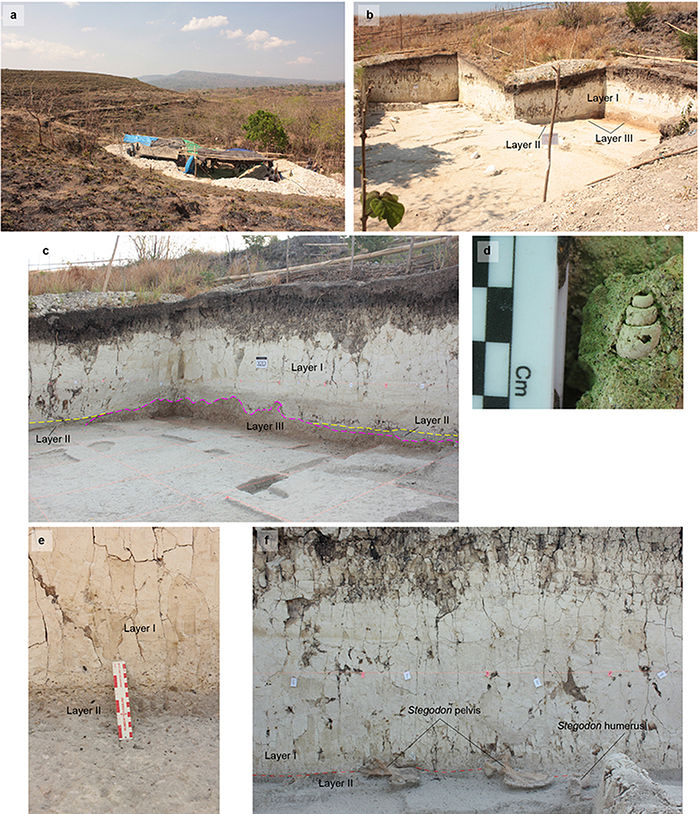
The dig at Mata Menge. Note the Stegodon florensis (ancient elephant) fossils.
a, View of Excavation 32 (trench E-32) in 2014, taken towards the north-north-west. The dip slope visible in the background is the eastern flank of the Welas Caldera, which was the source for many of the volcanic products deposited in the area.
Photo and text:Brumm et al. (2016)
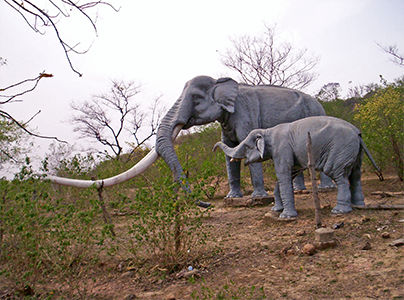
Stegodon
Fibre Glass sized life size models of extinct Elephants (tusks measuring 18 feet) which once lived in Siwalik Hill ranges.
Stegodon is a genus of the extinct subfamily Stegodontinae of the order Proboscidea. Stegodonts were present from 11.6 mya to late Pleistocene, with unconfirmed records of regional survival until 4 100 years ago. Fossils are found in Asian and African strata dating from the late Miocene. They lived in large parts of Asia, East and Central Africa and North America during the Pleistocene.
Sculptor: Unknown
Photo: Vjdchauhan
Permission: GNU Free Documentation License
Text: Adapted from Wikipedia
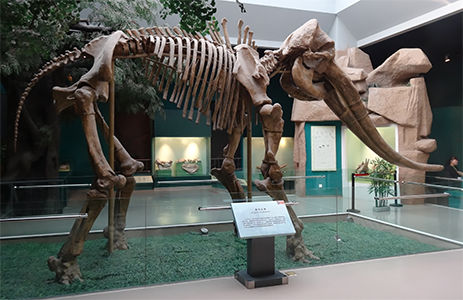
Stegodon skeleton at the Gansu Provincial Museum.
Photo: 幽灵巴尼
Permission: Creative Commons Attribution-Share Alike 3.0 Unported license
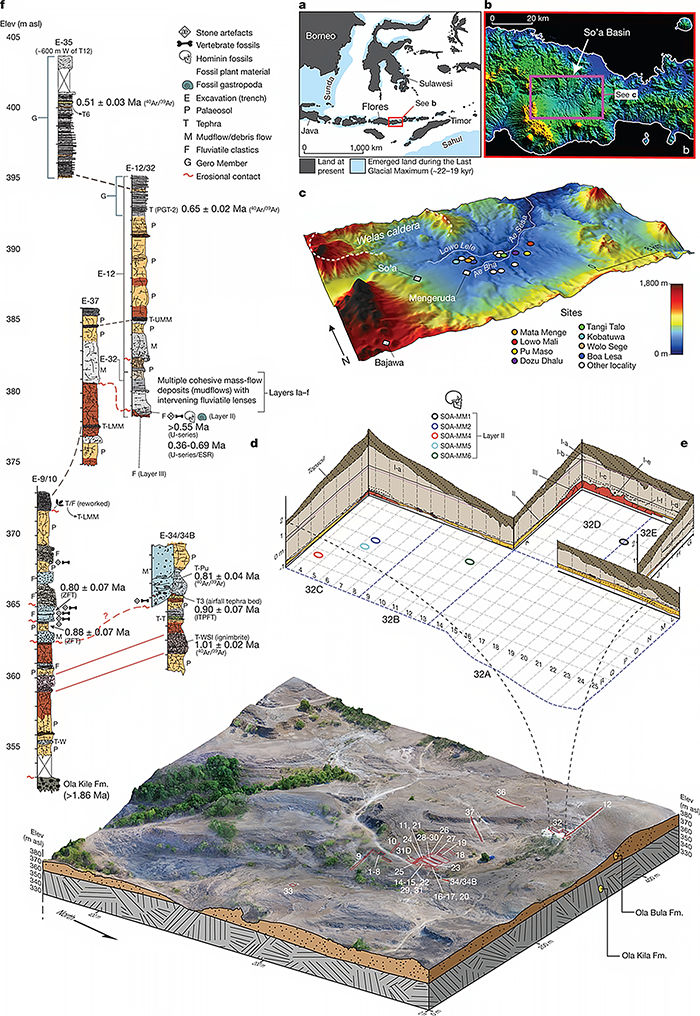
Context and chronology of the hominin fossils at Mata Menge.
a, b, location of Flores and the So'a Basin.
c, Digital elevation map of the So'a Basin, with location of Mata Menge and other sites mentioned in the text. A single outlet of the main river system (the Ae Sésa) drains the basin via a steep-walled valley towards the northeast.
d, Stratigraphy and chronology of the main fossil-bearing intervals and intervening Ola Bula Formation (OBF) deposits at Mata Menge. Several basin-wide key marker tephra beds that are exposed in the hill flank on the northern side of Mata Menge (trench E-34/34B) are eroded in the central part of the stream valley, where they are replaced by a 4–5-m-thick sequence of tuffaceous mudflows with intervening fluvial lenses forming the lower fossil-bearing palaeovalley-fill sequence.
e, f, Context of the hominin fossils; f is a 3D image of Mata Menge and surrounds, with excavated trenches outlined in red and labelled, and e is a 3D representation of the stratigraphy exposed by trench E-32A to E, with coloured ovals denoting the positions of in situ hominin fossils (SOA-MM1, 2 and 4-6) excavated from the fluvial sandstone unit, Layer II. The remaining hominin specimens were retrieved in the sieves.
Trenches E-1 to E-8 were excavated between 2004 and 2006, at the section originally excavated by Th. Verhoeven in the 1950s5, 6. The remaining trenches were excavated between 2010 and 2015. E-12 is a slot-trench excavated into the side of a hill, revealing an 18-m-thick sequence of lacustrine clays and micritic limestones, fluvial sandstone beds, massive tuffaceous mudflows, well-developed clay-textured palaeosols, and numerous centimetre-thick basaltic tephra inter-beds from the middle-upper part of the OBF.
At the base of this slot-trench, a less than 30-cm-thick fossil-bearing sandstone unit (Layer II)—from which all the hominin fossils were retrieved—was exposed.
Tephra codes in d are as follows (top to bottom): T6 (upper inter-regional tephra); PGT-2 (Piga Tephra 2); T-UMM (Upper Mata Menge Tephra); T-LMM (Lower Mata Menge Tephra); T-Pu (Pu Maso Tephra); T3 (lower inter-regional tephra); T-T (Turakeo Tephra); T-WSI (Wolo Sege Ignimbrite); and T-W (Wolowawu Tephra). The original published 40Ar/39Ar age for T-WSI is 1.02 ± 0.02 Ma (ref. 14); however, when recalculated to the recently determined value for the age standard ACS-2 used in this study (1.185 Ma; see reference 25 in the Supplementary Information), T-WSI becomes 1.01 ± 0.02 Ma.
Photo and text: Brumm et al. (2016)
References
- Brumm A. et al., 2016: Age and context of the oldest known hominin fossils from Flores, Nature 534, 249–253 (09 June 2016) doi:10.1038/nature17663
- van den Bergh G. et al., 2016: Homo floresiensis-like fossils from the early Middle Pleistocene of Flores, Nature, 534 (7606): 245–248. doi:10.1038/nature17999. PMID 27279221.
Back to Don's Maps
 Back to Archaeological Sites
Back to Archaeological Sites
